Welcome to Doris Stoppacher's personal webpage
Personal research and project web page
A testrun on merger trees part III
This is the continuation of the post from 2021-01-21. The following questions are still open will be discussed in this post. Our main goal is to investigate wether the descendent information DescID in the ROCKSTAR (Behroozi et al. 2013a) standard output can be used to correctlyc track the halo on the main progenitor tree. To investigate that we use here particle data from the cosmological simulation Cholla (Schneider & Robertson 2015, Villaseñor et al. 2020) where ROCKSTAR was run on top of it between redshift \(0<z<6\) (divided into 194 snapshots).
We show in the Fig.1 we show the fraction of shared particles (measured according to the unique particle ID) found in two halos which are connecet by their DescID for the first appeasing eight halos (treeIDs0-7) and their direct progenitors. In Fig.2 the fractional difference in the halo mass for the same treeIDs and in Fig.3 and Fig.4 the corresponding growth rate function of redshifts for the virial mass \(M_{vir}\) and the virial radius \(R_{vir}\).
From that four plots we conclude that tracing the descendent informaiton does not provide us with reliable merger tree information. However, here we only consider eight trees which could systematically biased. In Fig.5 we show the position of the trees of the the first 500 trees (out of 706 total identified trees) colour coded of their snapshot ID (darker means lower and lighter higher redshift, respectively). The variaation in the position is totally reasonalbe and the position in the cube do not suggest that there is anything wrong on how we connected our main progenitors. in Fig.6-8 we zoom into the most massive halo at \(z\sim0.1\) residing on treeID3. The trajectory of this halo as well as its projection on the Z-Y and X-Z axes do also not indicate that their is a problem with connection halos. Therefore we decided to calculated the median variation of all identified trees at each redshift and show that in our next post 2021-02-27.
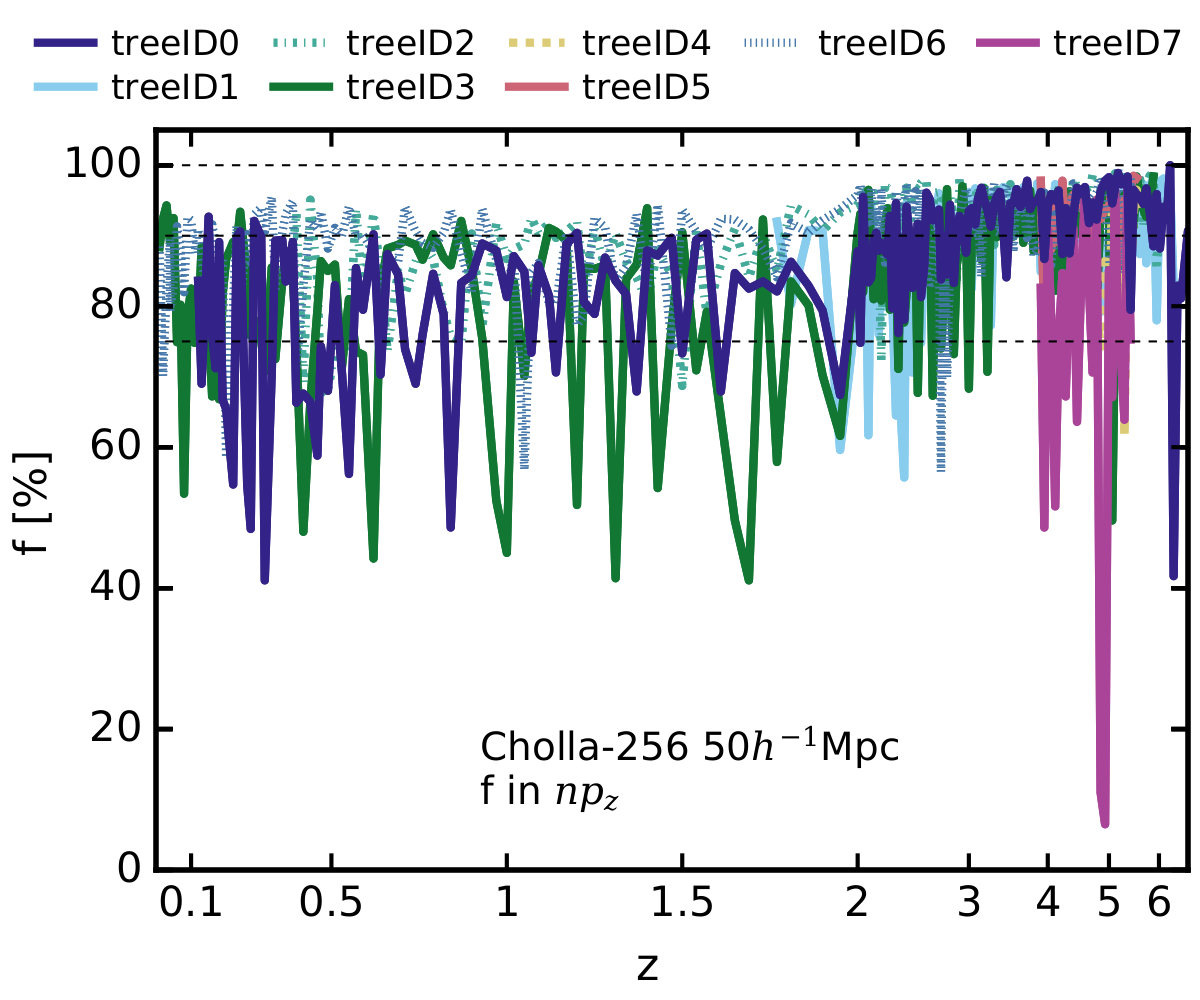
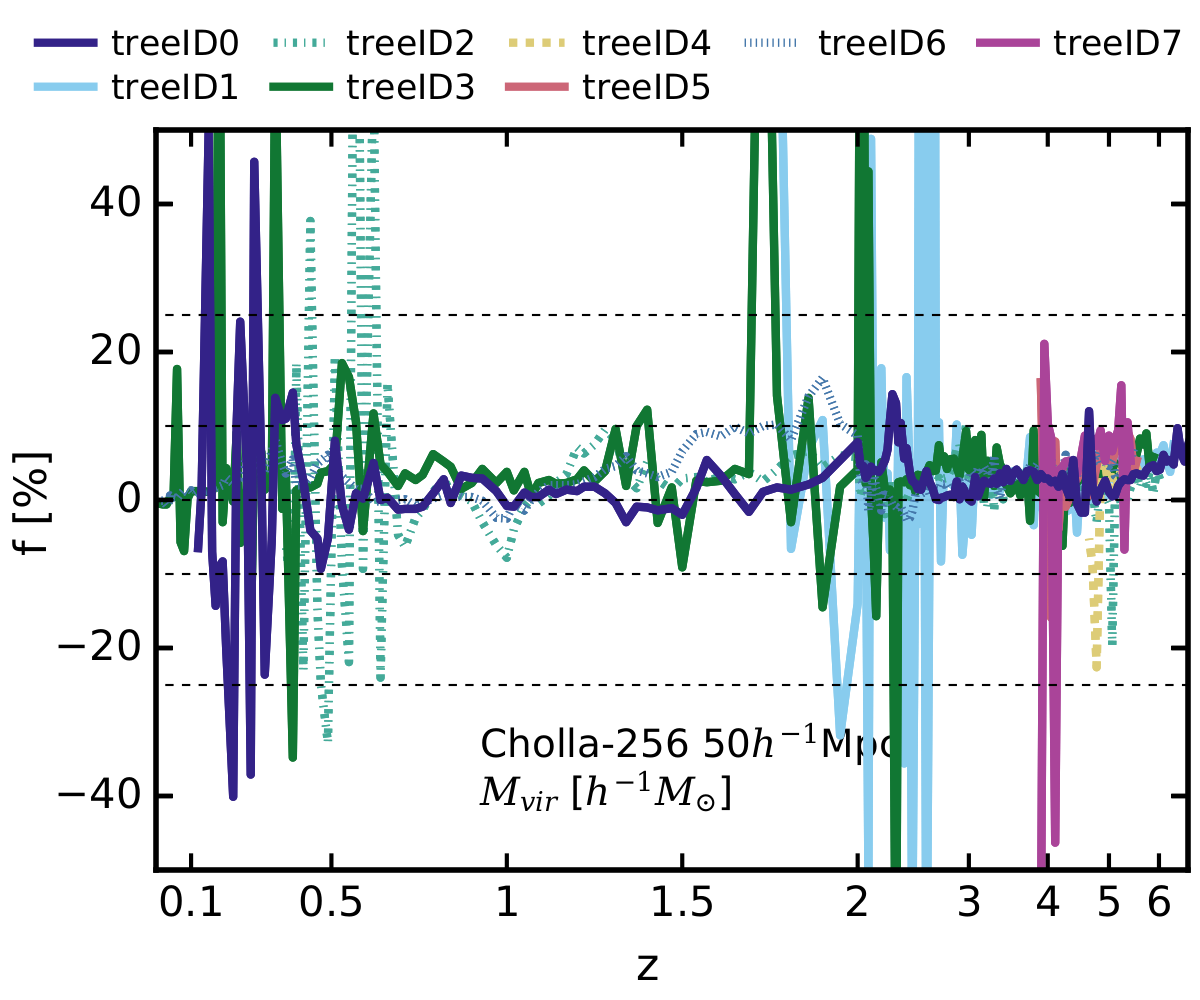

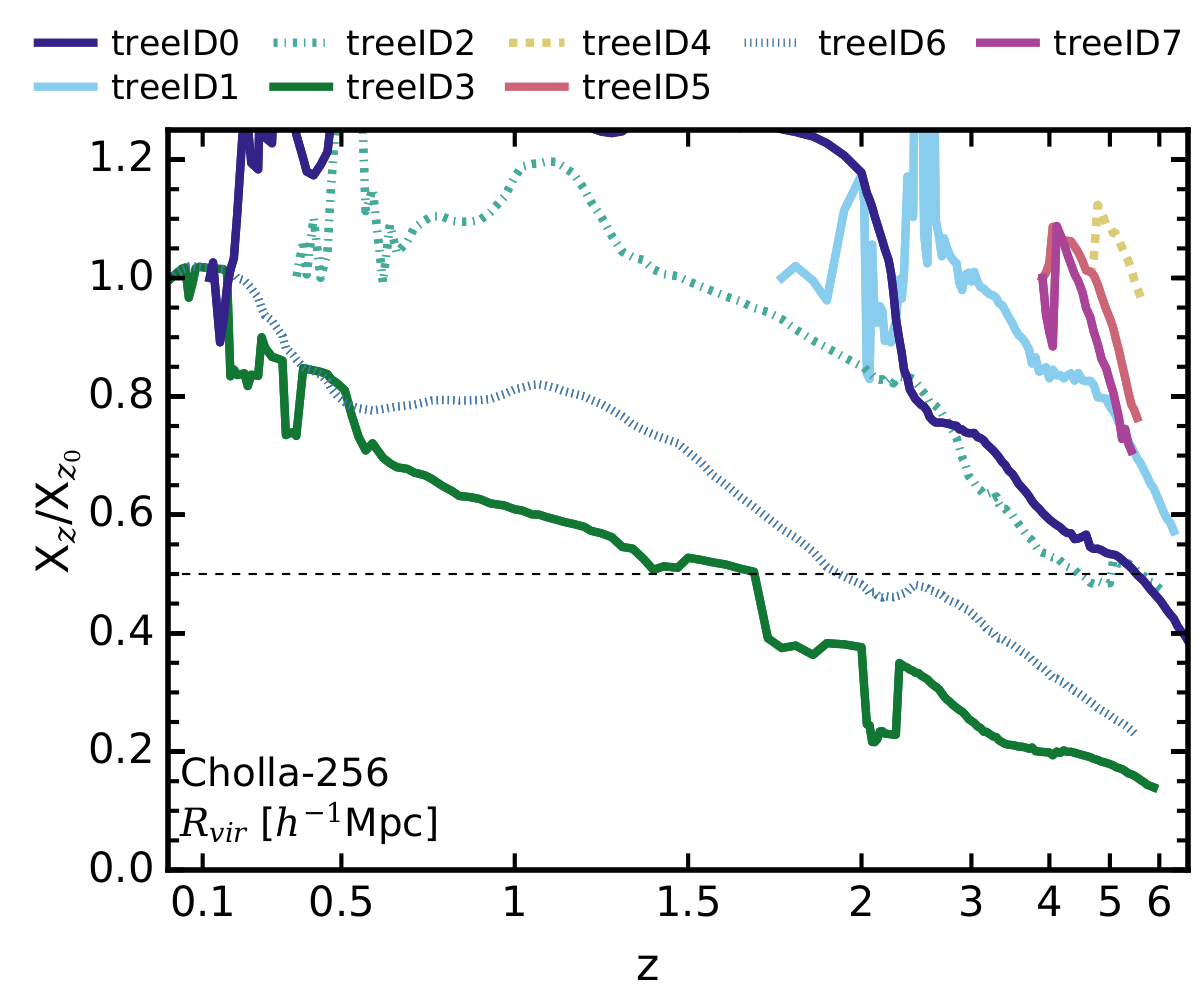
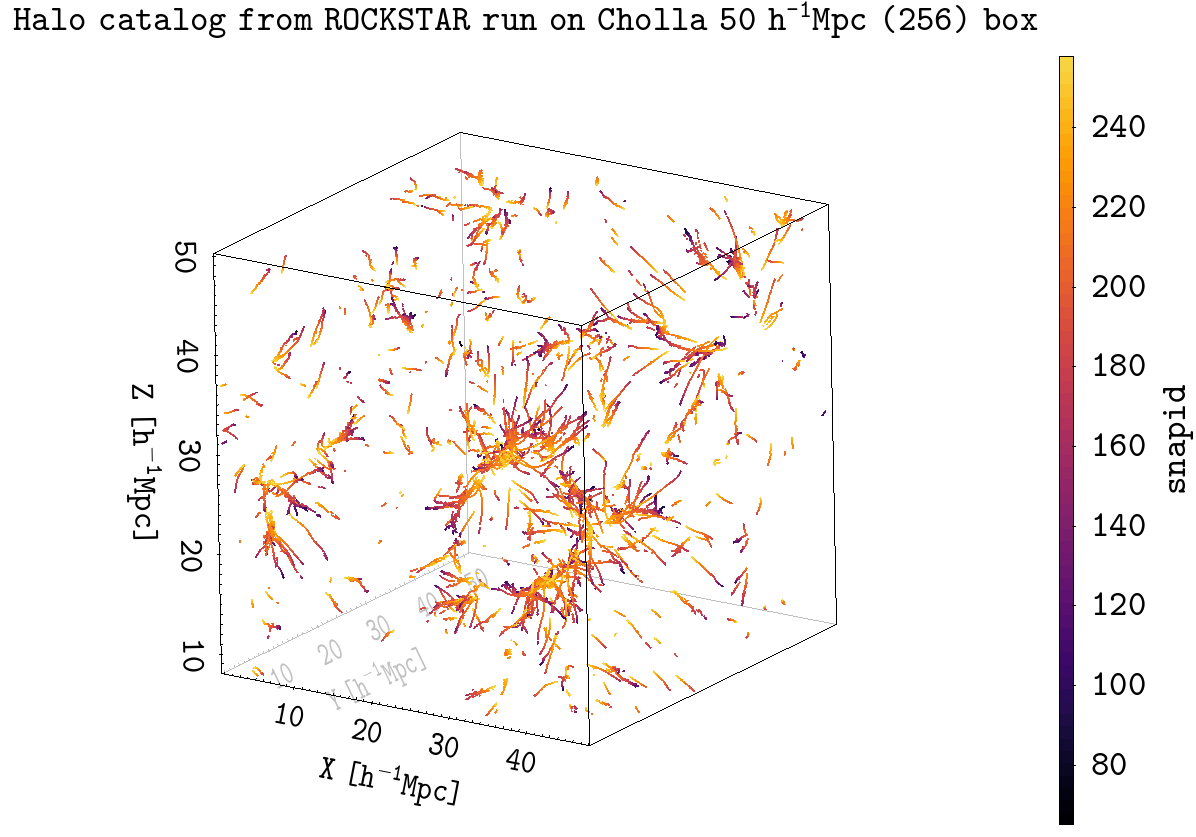
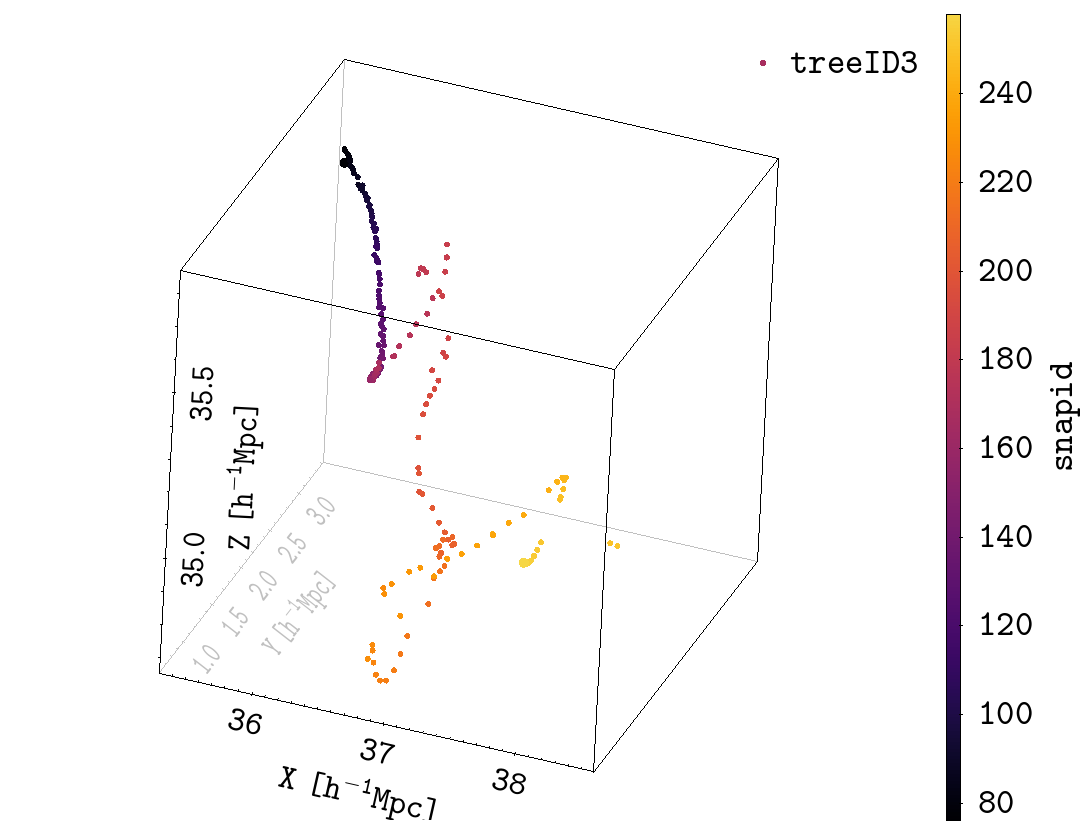
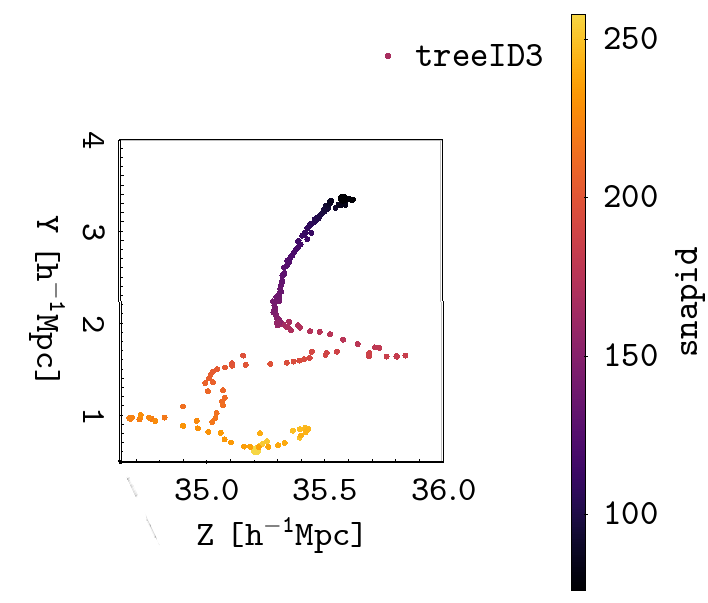
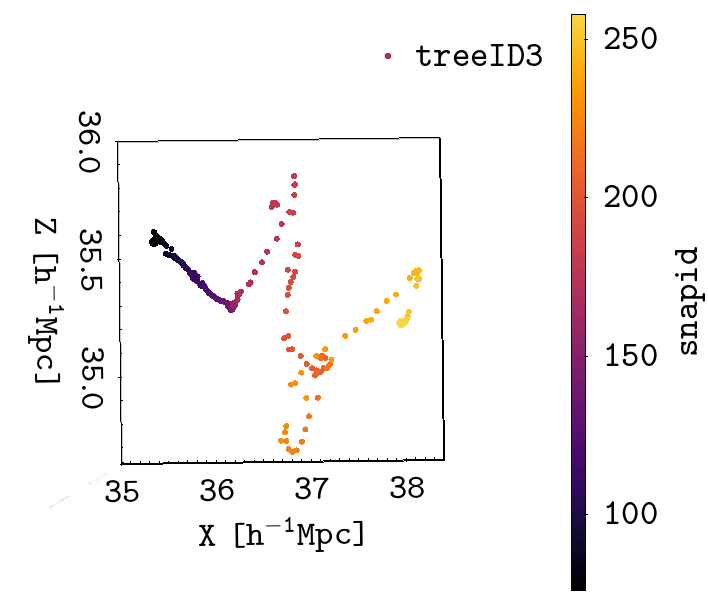 Same as in the privious figure but here the projection on the X-Z axes is shown.
Same as in the privious figure but here the projection on the X-Z axes is shown.